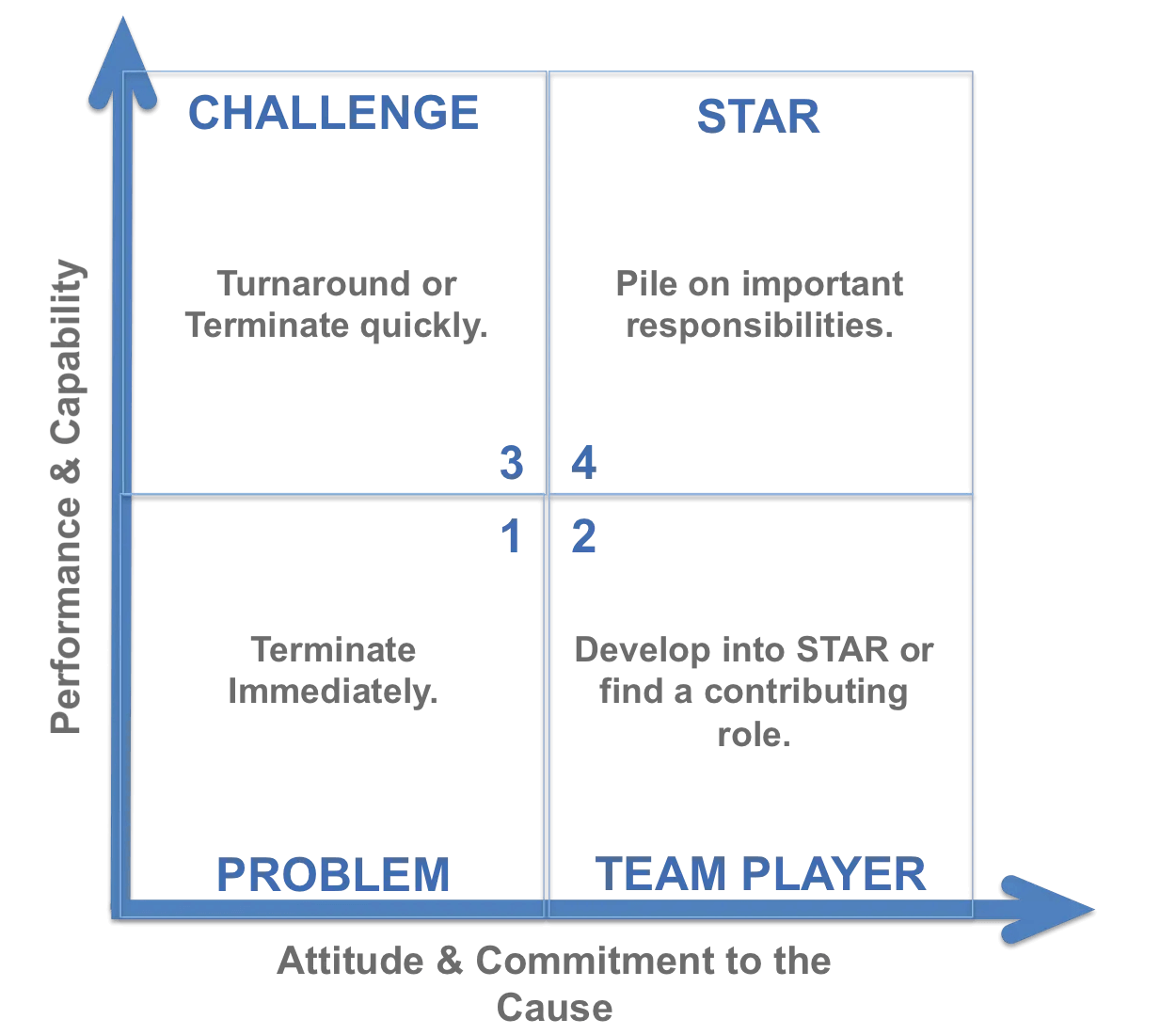I have been an executive and professional consultant since 1983, which has placed me in a wide variety of difficult employee situations. When I was 25, I thought I could turn every troublesome employee into a superstar simply by coaching and mentoring. By the time I reached 45, I came to realize the time and effort required to execute that lofty mission was simply too great to repeat consistently.
This journey has led me to a simple but effective method for quickly assessing employee fit within a company. While it certainly carries risk, I have found this method to be extremely useful in making good decisions quickly where time does not allow for a more thorough approach. Here’s how it works.
The Employee Fit Matrix considers an employee’s relationship with a company, where the X-value is represented by the attitude and commitment of the employee to leadership’s cause, and the Y-Value is represented by that same employee’s demonstrated performance and capability. When looking at fit this way, the employee can be placed into one of four quadrants, which are summarized below.
Assessing Employee Fit

Quadrant One: The Problem Employee.
The Problem Employee exhibits a combination of poor attitude and commitment, coupled with equally poor demonstrated performance and capability. This employee is easy to spot and the leader likely wonders how this person has kept their job. The obvious solution here is to terminate this person immediately, as their poor performance and attitude most certainly harm the organization.
Quadrant Four: The Star Performer.
The Star Performer demonstrates all of the positive attributes that you would desire in an employee. They couple great attitude and commitment to the cause with very high performance and capability. This employee is equally easy to identify and the leader typically wishes there were more of them around. The solution here is to load the Star Performer with increased authority, responsibility, and work.
Quadrant Two: The Team Player.
The Team Player has a great attitude and commitment but has demonstrated lower performance and less capability. In this case, while the leader desires to keep this employee around due to their positive influence on others, the employee’s performance may be detrimental to the group. The decision here is more difficult. The ideal goal is to move the employee into Quadrant Four: Star Performer or, as an alternative, find a role where the employee can contribute in a way that adds value to the organization. Only as a last resort would a leader want this employee to leave the organization.
Quadrant Three: The Challenging Performer.
The Challenging Performer carries a poor attitude and commitment but has demonstrated high performance and capability. This type of employee is the most difficult to address. While they carry the allure of high performance, they also can be toxic to a team’s chemistry and often believe they are exempt from discipline for poor attitude and commitment due to their high performance. To say it another way, they believe they are too valuable to lose. The goal here is to turn around their attitude so they move into Quadrant Four. The big challenge is that termination is the alternative if their attitude cannot be quickly fixed. My own experience is that it is better to terminate these folks sooner to preserve the culture and commitment from the rest of the group. I believe the group looks to see how leadership addresses Challenging Performers as a litmus test concerning their own commitment.
The Employee Fit Decision
Quadrants One and Four are typically easier to determine and the leader’s decision on what to do about these employees is equally straightforward. On the other hand, Quadrants Two and Three are much more difficult and the employee decision is less obvious and more emotionally charged.
Further Reading: THE PERIGON METHOD

